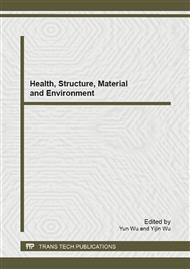p.795
p.801
p.807
p.813
p.817
p.823
p.827
p.831
p.836
An Ecological Suitability Assessment Method Based on Support Vector Machine
Abstract:
The ecological suitability refers to an appropriate degree of ecological conditions provided by an area for some certain use purposes. This paper developed an ecological suitability assessment method based on the principle of support vector machine which has advantages of dealing with small samples, nonlinear and high dimensional pattern recognition. The results showed that this ecological suitability assessment method reduced the uncertainty due to the mismatch between the inherent ambiguity of assessment object and the classification criteria of assessment indicators in determining the ecological suitability level, resulting in objective and reasonable assessment results. Moreover, compared with the assessment result from conventional ecological suitability assessment method, the result with this method was stricter, which was more conducive to the ecological environment protection. It provides a basis for making the ecological environment planning, and is beneficial to the coordinated development of resources use and regional ecological environment.
Info:
Periodical:
Pages:
817-822
Citation:
Online since:
February 2013
Authors:
Price:
Сopyright:
© 2013 Trans Tech Publications Ltd. All Rights Reserved
Share:
Citation:


